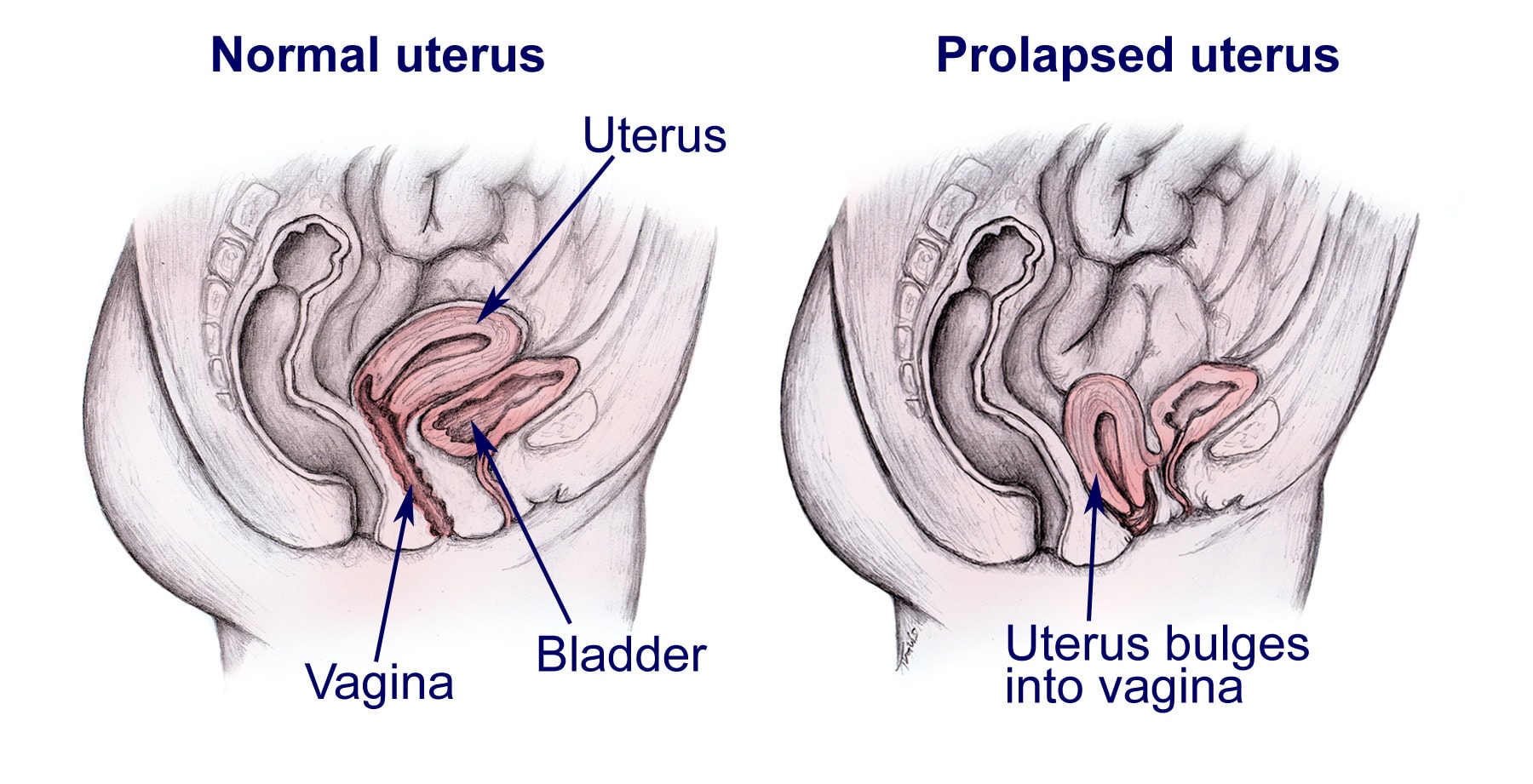Prolapsed Uterus
To contact us Click
HERE
Prolapsed Uterus::::::
Your uterus (womb in which a fetus develops) is normally held in place inside your pelvis with various muscles, tissue, and ligaments. Sometimes-because of childbirth or difficult labor and delivery-these muscles weaken. As a woman ages and with a natural loss of the hormone estrogen, her uterus can collapse into the vaginal canal, causing the condition known as a prolapsed uterus. - Muscle weakness or relaxation may allow your uterus to sag or come completely out of your body in various stages:
- First degree: The cervix droops into the vagina.
- Second degree: The cervix sticks to the opening of the vagina.
- Third degree: The cervix is outside the vagina.
- Fourth degree: The entire uterus is outside the vagina. This condition is also called procidentia. This is caused by weakness in all of the supporting muscles.
- Other conditions are usually associated with prolapsed uterus. They weaken the musclesthat holdthe uterus in place:
- Cystocele: A herniation (or bulging) of the upper front vaginal wall where a part of bladder bulges into the vagina, which may lead to urinary frequency, urgency, retention, and incontinence.
- Enterocele: The herniation of the upper rear vaginal wall where a small bowel portion bulges into the vagina. Standing leads to a pulling sensation and backache and is relieved when you lie down.
- Rectocele: The herniation of the lower rear vaginal wall where the rectum bulges into the vagina. This makes bowel movements difficult to the point that you may need to push on the inside of your vagina to empty your bowel.


No comments:
Post a Comment